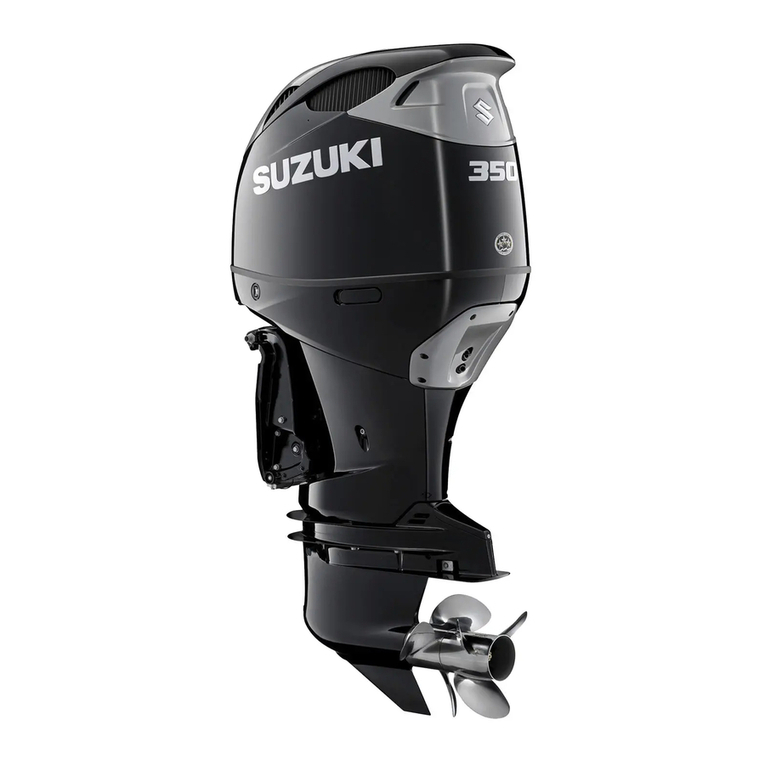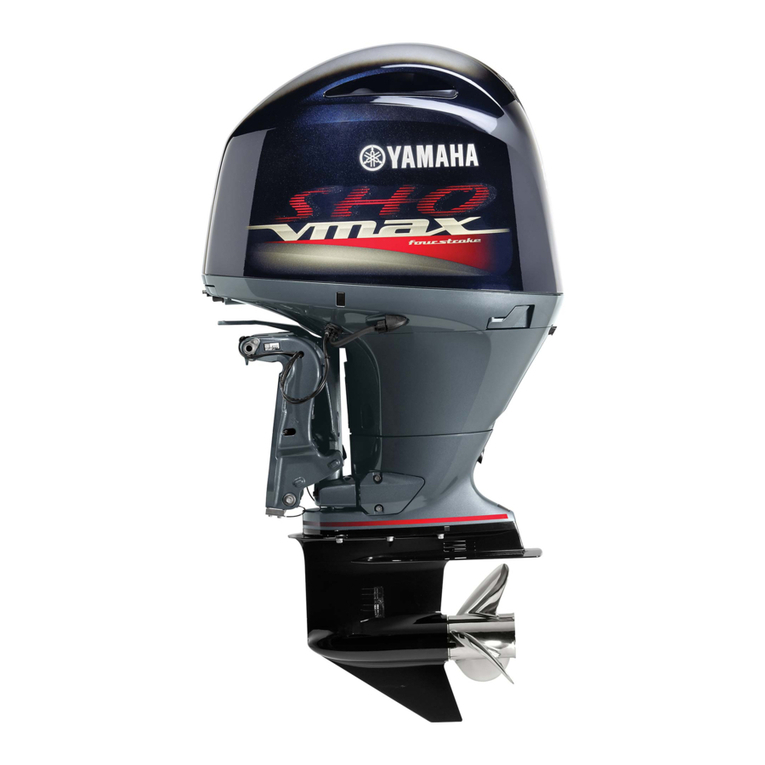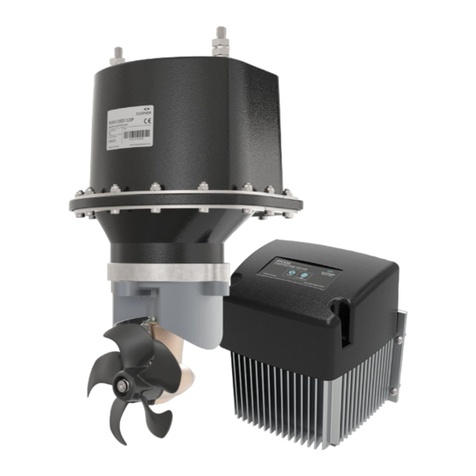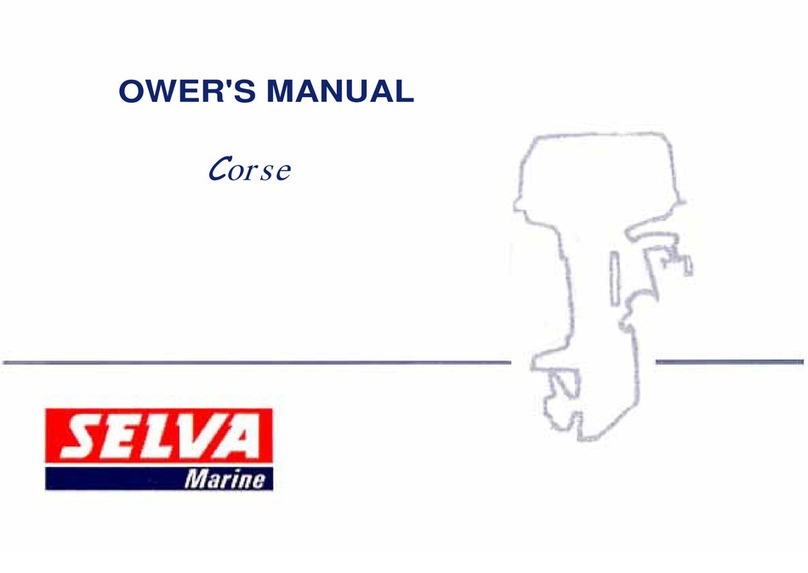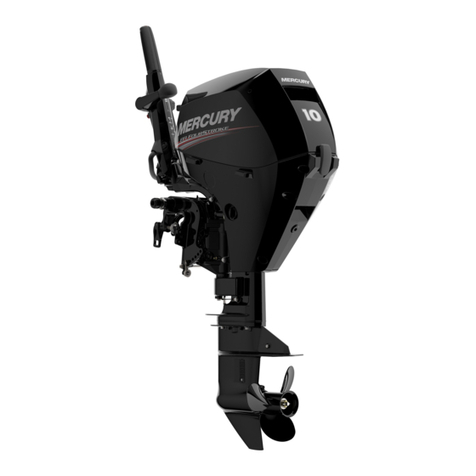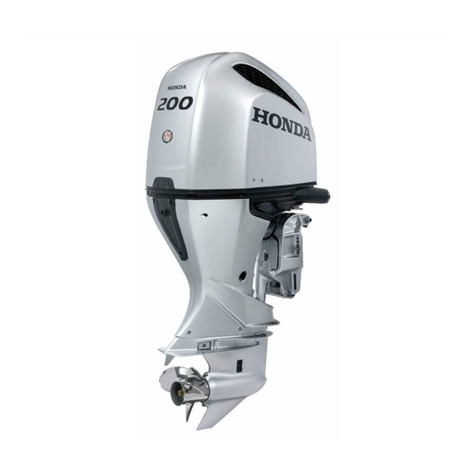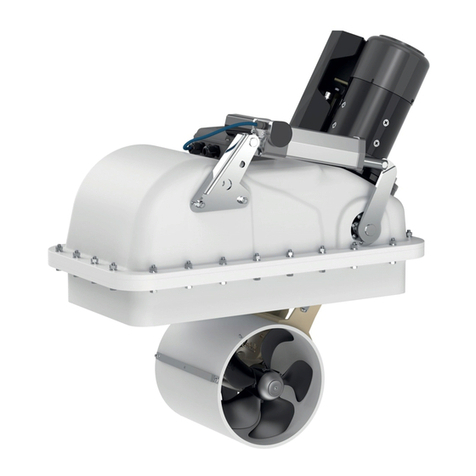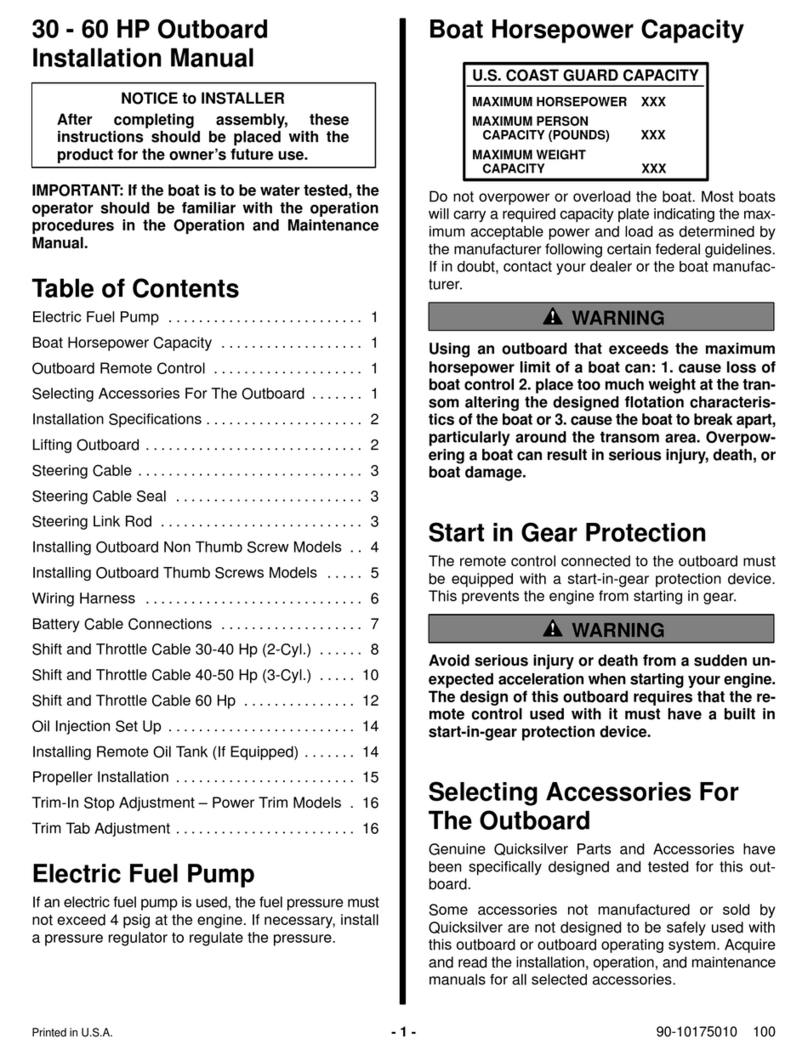Viking 3D13V User manual

i":-
I'
Ill'
'j
ert
OWIIER
GUIDE
OPTRATION
. iIAI}IT[}IA}ICT
. PARTS
I,I5T
EATON'S
3 H.P.
DT
1UXE
OUTBOARD
il0r0R
NODE I
3Dt3V
.l STROKE
INCHES
KI
- o.B.c. CERTIFIEO
2 CYCLE. 2 PORT
2 BLADE, 5-318" DIAMETER X 6-78" PIrCH
. POSITIVE DISPLACEMENT SYNTHETIC
RUBBER ROTOR
. BUILT IN FLYWHEEL MAGNETO
. SINGLE JET . VARIABLE VENTURI
. SINGLE LEVER SYNCHRONIZED
THROTTLE AND SPARK
FUEL TANK CAPACITY 0.5 GALLONS
RUNNING TIME (FULL THROTTLE) APPROX. 1
-tlz HOUR
STARTER .
AUTOMATIC REWINO
STEERING 3600 FULL REVERSING
WETGHT 38 POUNDS
RECOMMENDEO TRANSOM HEIGHT 15"
Monufocturederpresslyfor
&
SPECIFICATIONS
HORSEPOWER
NUMBER OF CYLINOERS
BORE ANO STROKE
PISTON OISPLACEMENT.
TYPE OF POWER HEAO
GEAR RATIO
PROFELLER
COOLING
IGNITION
CARBURETOR
SPEEO
CONTROL
by
IEATON C?,",,,0
Outboad
lTlarine
hrporctionof Cana&
ttd
Itltrlotoucx - (ArA] 402403-

F
TIMING LEVER
CAtr'BUR 8T,9fr AC-fi,J
ST ING
r(!.{oB )
+
i
STEERING
AND
CARRYING
H,ANDLE
TILTING BOLT
CI.AMP SCREW
fi
+- SWIVEL BRACKET
STERN BRACKET
ANGLE AOJUSTMENT LEVER
GEAR CASE HOUSING
3TARIOARO (RIGHI). PORT (LEFT') ARE Of:SICN^TIP WHTLE FACINC tOW
N
OTE
ALL BOATS POWERED BY MOTORS OF IO HORSEPOWER OR
REGISTERED. APPLICATION FORMS FOR BOAT REGISTRATION
ED FROM YOUR NEAREST COLLECTOR OF CUSTOMS OFFICE.
/.DRIVE SHAFT HOUSING
Y
ANTI_CAVITATION PLATE
UNDERWATER
F- EXHAUST OUTLET
TIEURE
I
MORE MUST BE
MAY BE OBTAIN.

OPENATIO1T OF YOUIS n|OTOB
ATTACHING TNOTOR
TO BOAT
This motor is designed
for useon a standard15inch
transom. If transom is higher, it shouldbe cut down
to 15 inches so propeller will be at least 2 lnches
below bottom of boat. Best performance will be ob-
tained only by having the driveshaft vertical andthe
propeller placed below bottom of the boat. If the
aboveinstructions are followed, the lowerunitshould
clear the bottom of the boat whenthe motor is turned
to reverse position: however, someboatsmay be so
constructed that the keel will have to be modified
for clearance.
Place motor on stern of boat with stern bracket
clamps inside the stern, centered on the transom
or stern board. Tighten bracket clamp screws se-
curely by hand. Adjust lower unit angle by tilttng
motor slightly. Lift up on lever (Fig. a) andmove
it forward or backward so that lower unit ls in a
vertical position when boat is loaded and running
(see
Fig. 2).
When motor is running, occasionalty check
bracket clamp screws to be sure they are
tlght. We will not be responslble for any
motor damaged or lost overboard due to
loose clamp screws.
The use of a safety chain or rope attachedto motor
stern bracket and boat will guard against Ioss of
motor overboard. Holes are provlded in thumb
screw handles through which a padlock may be ap-
plied to lock the motor on the boat. (SeeFig. 4.)
TUBRICATION
AND FUEL
INSTRUCTIONS
Proper lubricatlon is an important factor in the per-
formance and life of your outboard motor. The
following lnstructions are therefore very important
and shouldbe followed carefullv.
IMPORTANT
The oil and fuel mixture referred to in the following
lnstructlons should always be thoroughly mixed in
a separate container before pouring into motor fuel
taak: NEVER POUR SEPARATELY INTO FUEL
TANK. Also, all fuel should be poured through a
fine mesh strainer to remove dirt and water which
may be present. Use only metal containers.
tMp*,
You are to be congratulated
on your selec-
tion of this outboard motor which ls de-
signed and built to give years of satisfactory
service. The fine materials and hlgh stan-
dards of workmanshlp used assure durability
and lasting performance.
Read these instructions carefully before
attempting to operate your motor. It is
shippedcomplete ready for use.
TYPE OF GASOLINE. Use a good
gradeof regular
gasoline.
TYPE OF OIL. Use a high gradeoutboard
oil, or,
if that is not available, regular SAE 30 motor oil.
Avoid use of low-priced third grade (ML) oils.
MD(TURE. Mix L/2 pint of oil with each gallon of
gasoline.
STRAIN Att FUEI
PROCEDURE. Pour into the container approximately
one-half the amount of gasoline required. Add all
the oil lequlred at the ratio of l/2 pint of oil to
each gallon of gasoline. Shake the two together
until they are thoroughly mixed. Add the balance of
gasoline. Shake container briskly to insure mixing.
LUBRICATION OF GEAR CASE. The gear case
has
been filled at the factory with the correct lubricant.
Check lubricant after first 5 hours of operation;
then every 50 hours. (Seepage 5.)
TAKE CARE
OFYOURMOTOR
The service obtained from your motor ls dependent
largely upon the care it is given. Following the
simple suggestions llsted below will assist in its
proper maintenance.
1. Remove carburetor andgas tank strainer screens
and clean periodically.
2. Inspect
spark plugoccasionally,
clean
thoroughly,
wipe dry and adjust gap u necessary.
3. Check and adjust breaker points.
4. Draw up all nuts and screws at least once a
season.
5. Remove
grease
anddrain plugsperiodically, draln
off water if any and ftll with lubricant.
6. Wipe off motor regularly with a clean
oily cloth.
7. Remove propeller periodically to inspect shear
ptn. Observe condition of propeller.
NOT ENOUGH ANGLE
BOAT PLOWS
(
JUSTRIGHT
MAXIMUM PERFORMANCE
TOOMUCH
ANGLE
BOAT SOUATS
lIEURE2

aOperatlon of Your Motor
BREAK.IN PERIOD
Reasonable care in the operatlon of the motor during
the first several hours of use will improve its per-
formance and insure Ionger life. Follow the oiling
instructions carefully, Do not run continuously atfull
speed for the first few hours, to give the rings and
bearings a chance to become well seated. The motor
may not develop full speed and power until after ap-
pro>dmately 20 hours operation. No extra oil is
required for the break-in period.
STARTING AND OPERATING INSTRUCTIONS
See Fig. 3.
1. Open air vent screw in fuel tank filler cap.
2. Open fuel shut-off valve under fuel tank.
3. Move speed control lever to position marked
START.
4. Turn carburetor knob to left or PRIME position
and hold down against spring pressure for 10seconds;
then release.
5. PulI starter handle slowly until starter engages,
then pull forcibly. If motor does not start after
several pulls, repedt priming instructions. Allow
starter cord to rewind before releasinghandle. Also,
do not pull cord out more than 30 inches-
6. After motor stalts, turn carburetor knob slowly
to right until motor runs smoothly. Advance speed
control lever as desired.
?. Advance speed eontrol lever to FAST position
and adjust carburetor knob until motor runs smoothly.
Since the speed control lever and carburetor control
are synchronized, the full range of speed is obtained
without further adjustment of the carburetor knob,
except when under unusual conditions.
8. To stop motor, move speed control Iever to
position marked STOP or beyond.
NOTE
The above starting instructlons are given in
step by step form - it is advisable to become
familiar with each detail prior to actually
operating the motor. A few moments spent
in practice are well worth while.
ArRvENr-,/"til
scREw €trf*f
,: .iliitir:q:'
WARIYI MOTOR
It is not necessary to prime motor when starting i-f
motor has be-en warmed up. Motor can usually be
started with carburetor knob in running position
and pulling starter handle with speed control lever
at START position.
FIOODING
Flooding may occur by over-priming or priming a
warm motor. If this occurs, turn carburetor knob
to extreme right (Iean posltton) and pull starter
handle several times. When motor starts, allow to
run until it stops. Then follow instructions for start-
ing cold or warm motor, whichever applies.
REVERSE
An important feature of the motor is that it can be
turned completely around in its pivot bearing, per-
mitting backing up and easy maneuverability. To
reverse, simply raise the steering handle and turn
the motor around to REVERSE position. With the
motor in reverse position, the reverse lock (Fig.
4) prevents the thrust of the propeller from forclng
the lower unit out of the water. The reverse lock
should be kept lubricated with grease and checked
periodically for proper operation. For SAFETY SAKE
do not attempt to reverse motor at any speed higher
than haU throttle.
l*"*f
I c^Utrox I
(
--.!
Be careful not to strike submergedobstruction
when in REVERSE - motor does not tilt
in reverse position.
RE'VTOVING
TVIOTORFROII BOAT
When removlng motor from boat, llft motor i.n a
straight upward position and hold this posltion for
a brief period until all water is drained from the
underwater exhaust tube and water cooling system.
Do not stand motor on magneto or carry with the
magneto down before drainlng water, as this may
allow water to enter the powerhead from under-
STARTER
HANDLE
water exhaust tube. Toward enct of
run, juat before etopplngmotor, cloee
FUEL SHTIT-OFF VALVE andpermit
motor to run until it Btopa, dralning
carburetor. Cloee carburetor adJuet-
lng knob and vent screw ln flller cap.
The motor can then be carrted wlth-
out leakage. For complete eafety,
empty fuel tank when transportlng
motor,
SPEED
CONTROL LEVER STEERING
tr
rA4:r
-a
./
FUEL ./
SHUT-OFF
VALVE ]IEURE
I

PROPELTER
Motors are equipped wlth a propeller which gives
the best all around performance on the average boat.
Adding a high speed propeller to a motor will not
increase the speed of the boat unless the boat itself
is light and designed to develop higher speed. We
cannot be responsible lor wear or damage to a motor
used for racing or equipped with a raclng propeiler.
PROPELLERSHEAR
PIN
Il the propeller strikes an obstruction, a shear pin
in the propeller shaJt may shear off, preventing
damage to propeller, gears or shaft. When the
pin shears the motor will suddenly speed, but pro-
peller will not turn. SHUT OFF MOTOR IMMEDI-
ATELY. Remove cotter pin, propeller shalt nut, and
slip oll propeller. Remove broken pin from propeller
shaft and replace with new shearpin. Reassembleand
tighten nut- firmly against propeller but not tight
enough to partially shear the pin. Replace cotter pln.
THECO.PIIOT
The co-pilot permits the motor to maintalna set
course without holding the steering haldle. It can
be adjusted by tighteningthe screw, located under
front of pivotbearing(Fig. 4) to the desired tenslon.
TILTING FRICTION
To adjust tilting frlction, ttghtenor loosennut (Fig.
4) on side of stern bracket to desired tension. Ten-
sion should not be too great, but only enoughto
maintain motor tn a tilt position. Never tilt motor
by using steering handle. Grasp rear of tank at
sides, thentilt.
EMERGENCY
STARTING
In case of starter failure. vou can still use your
motor.
Remove the screws holdtng starter housing to fuel
tank. Lift off entire starter housing assembly.
To start the motor, wind a 3/16-lnch rope wlth a
Operation of Your Motor
knot in one end clockwlse on the pulley on top of the
flywheel. Start motor in theusual.manner. (Fig. 5.)
When replacing the starter housing assembly, set
ln position and start the mounting screws. Hold-
ing starter in posltlon, pull handle slowly untll
starter engages. Tighten screws and agaln check
engagement,
CARR.YINGHANDLE
The carrying handle ls a part of the steering
handle. To use, ralse handlegrip sllghtly, press
spring loaded steering handle lock (Fig.4) and
push handle all the way down. Release lock and
handle will automatically lock in position. To
again use as steering l'.-.irl'c, press lock and raise
handle
CARBURETOR
ADJUSTTIIENT
The carburetor ls adjusted for both htgh and low
speed operation at the factory. If further adjust-
ment is necessary proeeed as follows: Wtth port
motor cover removed, start motor as previously
lnstructed, and operate at FAST, adjust carburetor
knob untll motor runs smoothly. Now move speed
control lever to SLOW. Turn low speed adjusting
screw, located on right handside of carburetor (Fig.
7) toward RICH or LEAN untll satisfactory low speed
performance is obtained.
NOTE: Turning low speed adJustlng screw or car-
buretor knob to the left enriches the mlxture, that
ls, lncreases the ratlo of fuel to air. Turning to
the rtght leans the mlxture, reducing the ratio of
fuel to air. A rich mlxture may cause motor to
run "rough" and a lean mixture is tndtcated by
"coughlng" or "spltting" ln the carburetor.
The carburetor ls now adjusted for average condi-
tlons. Spectal settlng may be necessary for best
performance wlth heavy boat loads or very slow
trolling.
RUNNING MOTOR IN TESTTANK
1. Do not run motor out of water.
2. Do not "break-in" motor ln tank.
3. When running ln tank be sure gear houslng and
propeller are submerged.
4. Do not race motor in tank.
5. Use test propeller when testing motor in tank.
6. Cavttatlon (air pocket around propeller) may oc-
cur when operatlng motor ln tank with regular pro-
peller. Motor will then not perform properly or it
may race and be damaged as a result,
1.
2.
J.
6.
7.
8.
q
(
Handle lock
Tilt frlctlon bolt
Steering and
carrying handle
Safety chain llnk
Angle adJusttng lever
Reverse lock
Bracket clamp screw
Co-pllot adJuetlng screw
Tilttng frlctlon nut
TIGURE
4]IEURC
5
